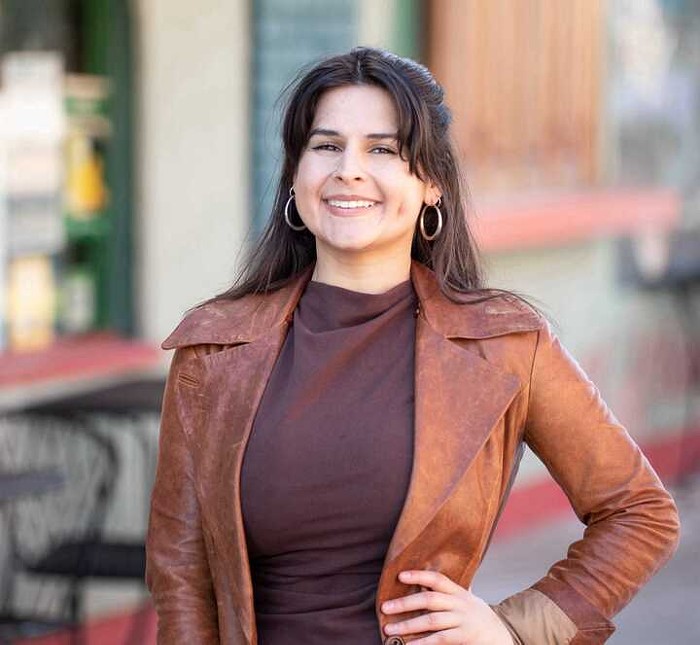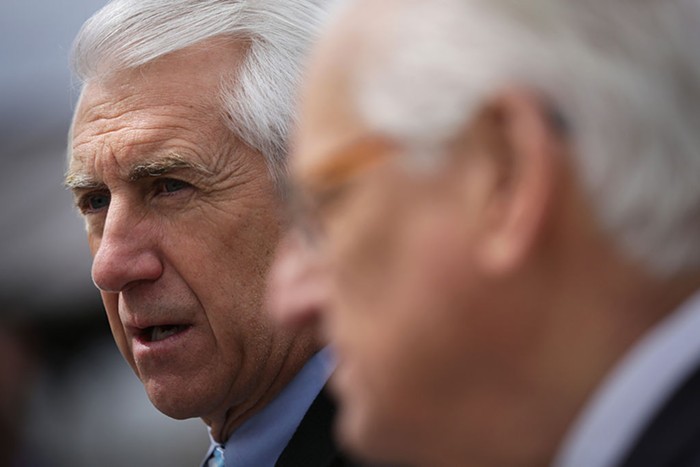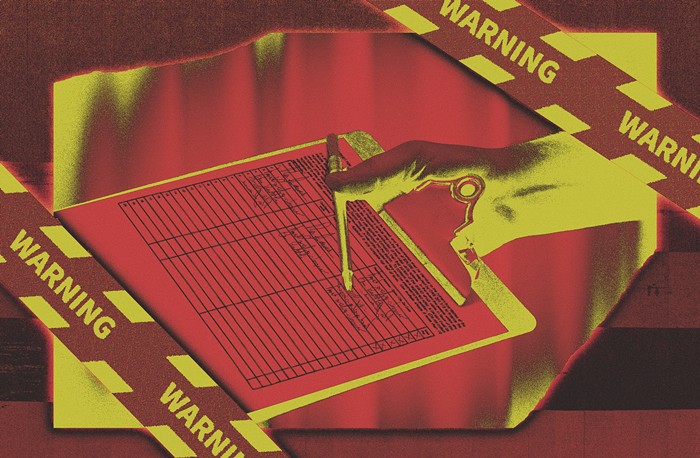
Since the Sawant Recall campaign failed to turn in its signatures a couple weeks ago, it is now all but certain that District 3 residents will not vote on whether to recall Seattle City Councilmember Kshama Sawant on the general election ballot this November.
Here is the language King County Elections spokesperson Halei Watkins used to describe the situation: "We are past the point of being able to guarantee being on the General ballot, but not past the point of possibility."
She put it that way because recall deadlines are relative. The Recall Sawant campaign must turn in over 10,700 valid signatures from District 3 voters by October 19, but they could turn in those signatures earlier.
Why it's probably too late
Once the recall campaign turns in the requisite number of signatures, the elections department will need between two and four weeks to validate them. After they complete the certification process, they must hold an election between 45 and 90 days later.
But before that election can take place, the department needs to build the recall election into the ballot and voters’ pamphlet; translate the recall language into Chinese, Korean, Spanish, and Vietnamese; print everything up; and then send it out to the postal service. To make the November ballot, the County would need to get all of that done before September 17, which is the day ballots for overseas and military voters go out.
Today is August 19. Even if the recall campaign turned in the required number of signatures tomorrow, and even if the elections department certified those signatures in two weeks, it'd be tough to get all that other work done in the ten remaining working days.
All of this means the recall vote will likely fall on some special election date, when turnout typically tanks, or even some other semi-random Tuesday in the winter. That means Sawant will likely have a harder time keeping her job, since high-turnout elections typically redound to the benefit of politicians who fight for tenants, workers, poor people, and others who move around a lot.
The Kshama Solidarity campaign saw this potential problem coming early last month, and so decided to start gathering signatures in support of Sawant's own recall. Their argument to the recall campaign was simple: since most people vote during general elections, putting the recall question on the general election ballot would be the most democratic option. Deliberately trying to avoid that option would be tantamount to voter suppression.
Though Sawant Recall campaign manager Henry Bridger II initially said he wanted to avoid a general election ballot showing, he later said he actually did want the recall to make the general election ballot.
In a July 15 letter to Sawant and Sawant campaign manager Emily McArthur, Bridger thanked the solidarity campaign for "joining the Recall Campaign and helping us get on the November general ballot."
He added: "The Recall Campaign has always been focused on collecting the required number of signatures to have your recall on the ballot for District 3 voters in November. Now with your help and cooperation together, we can make your recall a reality!" This statement obviously contradicts the claim Bridger made back in April, but, whatever, we'll move on.
The race to collect 13,000 signatures, or maybe 20,000, or maybe 16,000, or wait, no, yeah...14,000
On August 2, the solidarity campaign said a legal courier hand-delivered the last of the 3,174 signatures they'd collected to the office of John McKay, the recall campaign's lawyer. (In a July 16 letter, Bridger demanded the solidarity campaign hand over signatures to his lawyer every 48 hours "in order to avoid any dispute or the intervention of the courts or law enforcement," despite the fact that state law "doesn’t lay out any requirements for intervals in which signatures need to be handed over to said recall petitioner," according to a spokesperson for the elections department. Nevertheless, the solidarity campaign said they obliged the request. Neither McKay nor Bridger told me why they made this request.)
In any event, in a Facebook post published after that delivery, the recall campaign claimed the following: "As of July 30th, the campaign has collected 11,576 unverified signatures."
It's unclear whether that number included any of the signatures the solidarity campaign handed over. Their statement explicitly says "the campaign," which suggests they didn't include the signatures gathered by the solidarity campaign, but Bridger wouldn't tell me one way or the other, so we're left only with public statements and numbers from the solidarity campaign.
In an early July email, the recall campaign claimed to have collected a little over 9,000 signatures. A couple weeks later, during a July 24 interview with solidarity campaign volunteers, Bridger still claimed to have a little over 9,000 signatures, despite the fact that the recall campaign had been collecting signatures in the intervening weeks. By July 30, the solidarity campaign said it had delivered 2,587 to the recall campaign.
So, okay, fine. Let's assume that Bridger wasn't lying on July 24, and that the campaign had collected a little over 9,000 signatures. If you add the 2,587 signatures from the solidarity campaign to 9,000 signatures from the recall campaign, you get 11,587 signatures, which is more than the 11,576 signatures Bridger claimed to have. That difference suggests the recall campaign did not include the solidarity signatures in their tally, or that they only counted a few of them for some reason, or that they miscounted the number they had, or some other fuzzy nonsense.
Regardless, it strains credulity to believe the idea that the recall campaign collected no signatures or only a very few signatures during the middle of July, especially after email blasts and boots on the ground. At the absolute least, the recall campaign had between 12,000 and 14,750 signatures ready to turn in on August 2. Plenty of time to make the November ballot.
Is that enough for the recall campaign? Depends on when you ask.
The elections department recommends campaigns turn in "at least 20 to 30 percent more signatures than required in order to ensure they have an adequate number of valid signatures." Since the recall campaign needs to collect 10,739 signatures, that would mean they need to turn in between 13,000 and 14,000 signatures to feel safe. The Sawant Recall campaign FAQ page makes the same argument: "...it’s best to gather about 13,000 – 14,000 to ensure we have enough since some will be invalidated."
With somewhere between 12,000 and 14,750 signatures in their back pocket on August 2, the recall campaign could have turned in enough signatures to make the November ballot, though if they reallllly only had ~12K, then they may have come up a little short. That said, in an August 11 email to supporters, they claimed to have collected 13,000 signatures, so they could have turned them in then. But they didn't. Why?
Well, according to the August 2 Facebook message, they argued the campaign had to "continue its efforts to gather signatures" because Compassion Seattle—another bullshit right-wing petition that was circulating around the streets—had a low verification rate of 52%, and because 82 people requested to remove their names from the recall petition. If the recall campaign assumed they were as sloppy as Compassion Seattle in their signature gathering, then they'd need to gather over 16,300 signatures to feel safe.
However, in that email to supporters on August 11, the recall campaign moved the goal back to "around 14,000 signed petitions."
To put this all together in a neat little timeline:
• In April, Bridger said he didn't want to put the recall on the general election ballot.
• Later on, Bridger said he did want to put the recall on the general election ballot.
• The Recall Sawant website said the campaign needed to gather between 13-14,000 signatures.
• On July 24, Bridger told Kshama Solidarity volunteers he actually needed to collect 20,000 signatures.
• Though he likely had between 12 and 14,000 signatures on August 2, he claimed he needed more signatures, perhaps over 16,000.
• On August 11, Bridger sent out an email setting the goal back at 14,000 signatures.
If not voter suppression, then what?
When asked to explain his flip-flopping and other inconstancies, Bridger simply sent me a boilerplate response: "District 3 voters are sick of Sawant’s political games... The Recall Sawant campaign is close to collecting the 14,000 signatures we estimate are needed to qualify for the ballot and look forward to giving every District 3 voter the chance to hold Sawant accountable."
Judging by all the bullshit and obfuscation coming from the recall campaign, it's obvious that Bridger is the one playing the political games here. He moves goalposts to suit his whims, and he won't own up to the fact that he aims to take advantage of low-turnout elections in an attempt to boot Sawant.

Sawant's team calls that voter suppression. Recall Sawant claims its not, since the elections department will mail all registered voters a ballot. But renters, who tend to vote progressive, move around more often than the landed white gentry with water views, which means renters stand a greater chance to miss a ballot mailed to them if they somehow forget to reregister with their current address during an off-year cycle at a weird time for an election. Given that Bridger bent over backwards to avoid putting the recall on the general election ballot when he could have, and given that a specific group of voters likely won't vote as a result of that decision, voter suppression seems like an apt term.



















